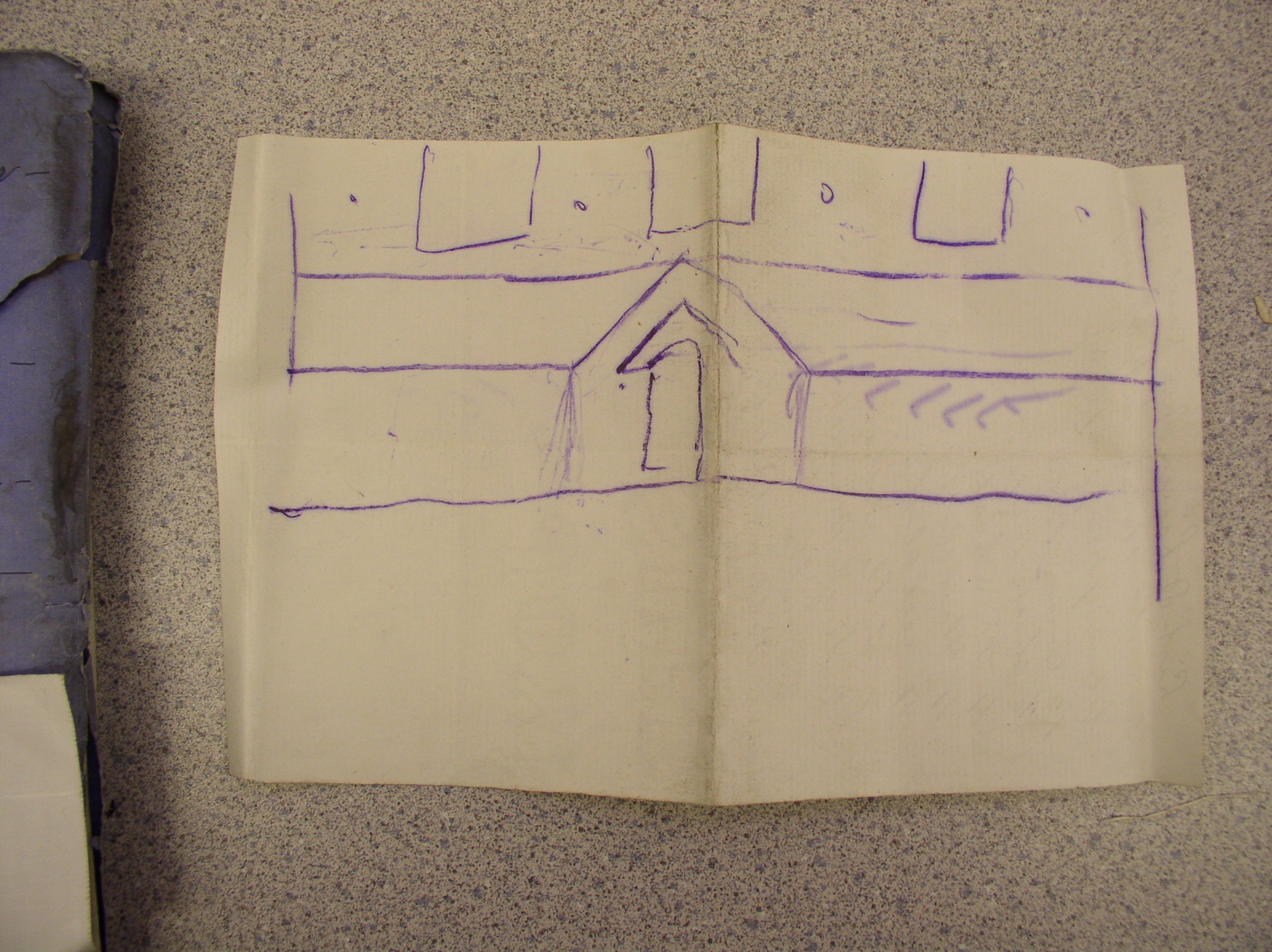Goytre Lodge – now Nantyderry House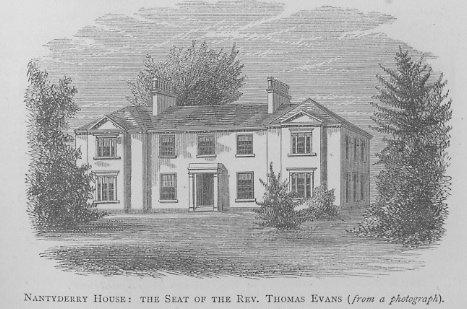
No 680 on the 1841 Tithe Map.
The estate comprised of 45 acres:
Cae’r eglwys (the church field)
Cae’r thin
Cae-pen-carreg (the field at the top of the stone)
Cae’r –defaid (the sheep field)
Cae’r-pen-yr-heol (the field at the end of the road)
Cae’r glwyd (the gate field)
Cae pump cover (the 5 acre field)
Cae’r wern-isaf (the field of the lower alders)
Cae’r-felin (the mill field)
Worlod-isaf-dan-y-ty (the lower meadow below the house)
Venhallog-dan-yr-ardd (possibly the sunny spot under the garden)
Cae’r-garth-haidd (the field of barley enclosure)
Cae-bach (the little field)
Cwm-cae-glwyd (the dingle of the gate field)
Goytre Lodge was owned in 1746 by the Bazley family of Bristol. James Bazely married Margaret Griffiths at St Iltyd’s, Mamhilad on April 15th 1746.
In his will James Bazley said he was a glover and an undertaker, he left his freehold estates to his son John Griffiths Bazley and Benjamin King.
An indenture of 18/19th September 1778 from John Griffiths Bazely and Jeremiah Osborne, transferred Goytre Lodge to Joshua Davies, the then curate of Goytre.
During the years 1821-3 the property was let to James Lewis of the Wern, Goytre.
The following three years it was rented by George Averill who was paying £20 per year, at the end of the lease in 1825 the Averill family moved to Abergavenny.
The same year Robert Farquhar of Pontypool, purchased the Lodge from the nieces and co-heirs of Joshua Davies.
Robert Farquhar was born in Ayrshire in 1764 and came to Pontypool in 1801, he then acquired the Blaendare Ironworks near Pontypool, living close by at Trosnant House.
In January 1803 he married Sarah Hill in Shoreditch, London, they had eight children:
Ann born in 1806, she married John Evans, a clerk from Trelleck Grange when she was still a minor. Ann died in 1845.
John, born in 1808 married by license Mary Winnifred Upham in September 1844 in Taunton, the census of 1851 says he is a 43 year old gentleman his occupation is a merchant and he is living in the square at Bridgewater. His wife Mary is 22, they have 5 children.
Their third child, James Henry born in 1812, became a Reverend, he married by license on the 26th June 1840 Georgiana Louisa Vaux. The census of 1851 says he is the perpetual curate of Llangoven and Penyclwdd, he and Georgiana have 4 children.
James Henry died in 1879 at Llanddewi Skirrid. The entry in the church register reads: Died suddenly when preparing to take a baptism in the new church, not yet open for service. W. P.
(W. Price, the rector of LLanvetherine.)
Daughter Sarah was born in 1814, she died aged seven in 1821 and was buried at Trevethin Church, the register entry says she is a daughter of Robert, coal merchant, Trosnant.
Elizabeth, born in 1816, married John Lloyd, a gentleman of Brynderry, Llantilio Crossenny in June 1844 at Llangoven, the service was conducted by her brother James. The census of 1851 says John Lloyd is a farmer of 67 acres and that they have 3 children. Elizabeth died aged 54 in 1870.
Jane, born in 1819 remained a spinster, she died in 1874 and was buried at Trevethin Church.
Their last child is another Sarah born in 1823, she married Andrew Hair in Raglan in 1846, they moved to Scotland then returned to the Pontypool area. Andrew Hair was manager of the water works and gas company, also a Major in the Army. 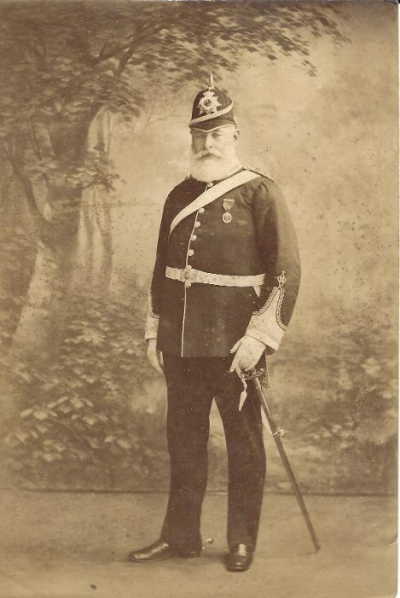
Sarah died in March 1883, her obituary reads: On February 26th at Trosnant House aged 69, Sarah the beloved wife of Major Andrew Hair. Sarah is the youngest daughter and last surviving child of the late Robert Farquhar Esq of Trosnant house and Blaendare.
It was Robert Farquhar who enlarged Goytre Lodge into a substantial home. He died in December 1832 aged 69 and was buried at Trevethin Church. His wife Sarah died in December 1844 whilst staying at Cefn Coch, Raglan.
Following Robert Farquhar’s death his eldest son John inherited Goytre Lodge, the electoral register for the years 1835/9 name him as the owner.
John Farquhar sold Goytre Lodge and 45 acres in 1839 to the Rev. Allen Morgan the new rector of Goytrey for £1600. Allen Morgan paid a deposit of £160, a further £440 to be paid on the execution of the conveyance and that the remainder £1000 of the purchase money at interest of £4 10s 0d per annum.
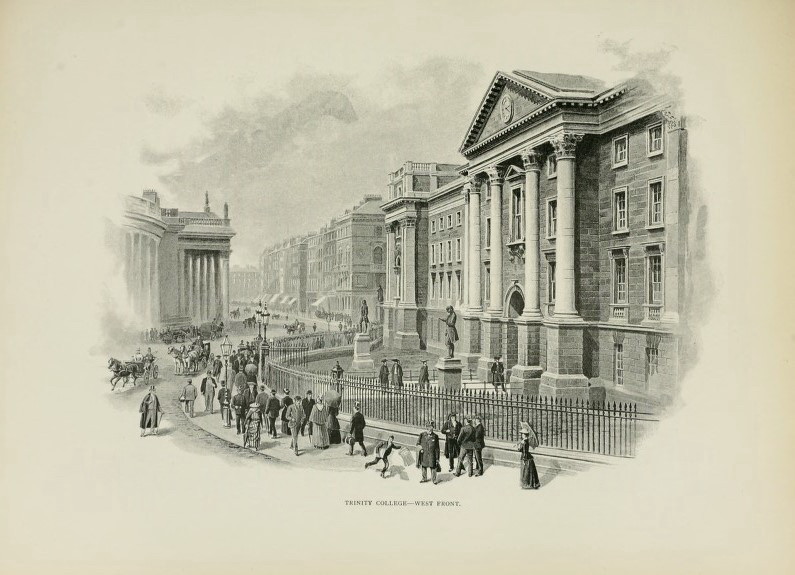
Trinity College Dublin
Allen Morgan was born in Tullow, Ireland in 1789, the son of the Rev. James and Mary (nee Ashenhurst) he attended Trinity College Dublin in 1806 when he was 17.
His father James is understood to be one of the Morgan family from Tredegar House, Newport, although I am unable to confirm this.
Allen Morgan married Margaret Dyne (also known as Bradley) at St Mary’s, South Stoneham, Hampshire on the 6th March 1827.
The census of 1841 says he is 45, from Ireland, his wife Margaret is 30, their six children are, Eusebius 10, Allen 8, Edward 7, Cosby 5, Thomas 3, and two year old Emily.
Their servants are Elizabeth Higgins 20, Joseph Hotham 15, Judith Conolly 35, Catherine Pritchard 30, Elizabeth Phillips 15, and Ann Evans also 15.
Their first son Eusebuis Hamilton born in 1829 in Kildavin, Ireland, went to Rugby school aged 15 after the death of his father, his address is given as Nantyderry Lodge.
In 1851 he went to Ceylon as a coffee planter (I assume this will be from his connection with Col. Henry Bird who also had coffee plantations in Ceylon.)
Eusebius died aged 21 in March 1851, at sea, whilst on his return journey from Ceylon. His will says he has under £800, which he leaves to his brother Dr Thomas Morgan.
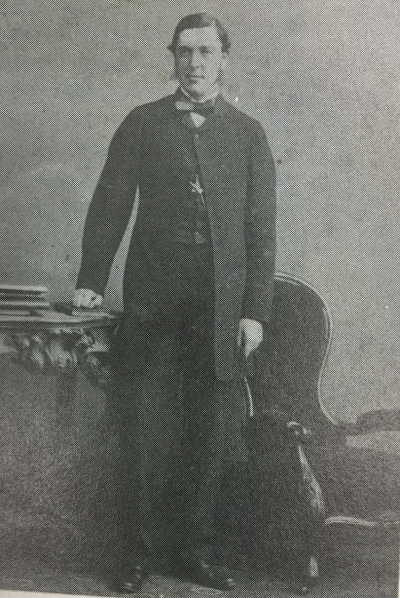
Cosby William Morgan
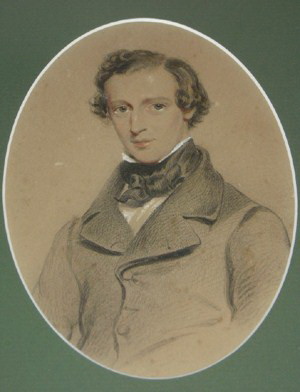
Dr Allen Bradley Morgan
Cosby William Morgan was born in 1834 and died in 1909 in Petersham, New South Wales.
On the census of 1851 he is a medical pupil in Carmarthen, he then went to New Zealand in 1851 aboard the “Joseph Fletcher,” from there in May 1854 he went to Australia aboard the “Mary Parker.”
He married Janet Patterson in July 1860.
I would like to say a sincere thank you to Lesley Morgan in Australia, for all the Morgan family history, her late husband Allen is a direct descendant of Cosby Morgan. (photo above).
Allen Bradley Morgan, another son, trained as a doctor. He was living in Abersychan as an assistance to Dr Andrew Davies in 1851. He emigrated to Wagga Wagga, New South Wales in 1856 where he was the surgeon and gaol vaccinator. He made several trip back to the UK during his lifetime.
Thomas Cecil Morgan, born in 1837 was educated in Edinburgh, he also went to Australia in 1859 to 1861 when he returned to Salisbury. In 1870 he is an assistant surgeon in HM Army, he died on November 24th 1885 at his brothers residence.
On the 26th July 1844 the Rev. Allen Morgan died, his will states he is of Nantyderi, he leaves all his estate to his wife Margaret to dispose of at her discretion. The witnesses of his will are Mary Eliza Dickinson, Elizabeth Philips, Owen T Philips and Emma Donkin.
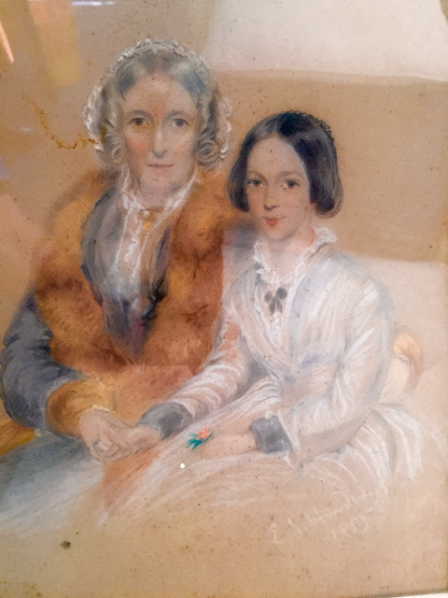
Margaret and Emily Morgan
The census of 1851 shows Margaret Morgan, Allen’s widow, living in Newcastle Emlyn where she says she is a fund holder, Cosby and Emily are with her, along with Emma Donkin, their governess.
After the death of Rev. Allen Morgan, his wife Margaret, sold Nantyderry Lodge to the Rev. Thomas Evans, who had been living with the Bird family at Goytre House.
The census of 1851 says he is 32 years of age, unmarried and was born in Carmarthen, staying with him on the census night is Thomas Cochrane a 24 year old Lieutenant in the English Con Rifles, born in Ireland, also John Lewis a 31 year old Clergyman born in Carmarthen, his servants are Elizabeth Page and Elizabeth Saunders.
Rev. Thomas Evans is not on the 1861 census, due I suspect to the fact that many parts of the census for that year are missing.
On the 6th March 1862 he married Ann Corfe at St Andrews Church, Clifton, Bristol, Thomas’s brother John Evans, the rector of Crickhowell taking the service.
Ann is the only child of James and Charlotte Corfe, nee Fidlin. Ann was born in Marylebone, London in 1827.
His bride, Ann was the beneficiary to her uncle John Fidlin’s fortune of £12,000 in 1860, this money was held by trustees who were most reluctant to release it to her.
On return from their bridal tour the Rev Thomas Evans and his lady arrived at Nantyderri Station to be greeted by loud cheers, they then walked to their home through a flower laden floor and archways of evergreens.
Rev Thomas and Ann’s first child, a son, Reginald was born on the 6th December 1862, he sadly died in September 1863 and was buried in St Peter’s churchyard.
There was a major fall out between Col. Henry Byrde (who just changed the family name from Bird by deed poll) in 1864 and the Rev Thomas Evans.
Col. Byrde was made High Sheriff of Monmouthshire, on choosing a Chaplain, it was custom apparently to use the Rector of your home parish, on this occasion Col. Byrde chose a friend. This caused great anguish to Rev. Thomas Evans who wrote several letters to Col. Byrde, culminating in a loss of friendship and great animosity.
Following this Col. Henry Byrde wrote a booklet for his friends perusal in 1865 with all the letters that had passed between the two parties.
Lewis Edmunds, the local builder who lived in Llanover, wrote in on March 4th 1864 that he was at home drawing a plan of a house for Thomas Evans Nantyderry and on the 9th November he said he was slating the house.
The building could have possibly been the new school and school house.
Thomas and Ann’s second child, a daughter Charlotte, was baptised on the 10th July 1864.
This was followed by the birth of their second daughter Catherine in April 1867, in July 1868 their third daughter Mabel was born.
About now Thomas Evans built the Cottages at Nantyderry.
In March 1867 Col. Byrde applied to Pontypool and Usk Highways Board have the Penystair road closed. This caused a very long and protracted disagreement with Rev. Evans, letters being written to the Free Press, sides being taken in favour of both parties and acts of vandalism by Rev. Evans or his workers destroying the new gates erected on Penystair road.
On the 13th July 1868, 29 children attended the opening of the Rev Thomas Evans school at Nantyderry, each paying 1d per week.
The census of 1871 says Thomas Evans is 51, a rector and JP, he was born in Carmarthenshire, his wife Ann is 44, their daughters Charlotte 7, Catherine 4 and Mabel 2 were all born in St. James, London.
Walnut Tree Farm was purchased by Thomas Evans in January 1871.
The following year his schoolmaster, George Thomas Bright resigned his post at Nantyderry School. The new schoolmaster is Richard Darlington, Richard’s post was not held for long, he was caught with a house-maid by Mr Evans’ gardener, who threw water over them. Richard left and went to Stafford, the census of 1871 says he is 28 and unmarried.
Arthur Fabian took charge of the school in April 1873.
A tea party for the entire neighbourhood was held in August 1872, the children of Nantyderry School all attended, the Rev. Evans paying for them.
In June 1873 is the start of the very well known “Vicar and the Well” saga. This is very well documented in various publications. About this time Thomas Evans was purchasing many properties in the parish, including Goytre Hall and Pentwyn Farm in addition to building cottages.
The census of 1881 says Thomas Evans is 59, a rector and JP, Annie his wife is 54, their three daughter are Charlotte 17, Catherine 14 and 12 years old Mabel. They have four indoor female servants, one groom and a gardener.
Five years later Thomas Evans died, on the 16th April 1886 in Cheltenham, he left the sum of £24,000, plus real estate to his wife, then to their daughters. Ann Evans died on the 12th February 1896 in Cannes, probate amounting to £93,3313-11s-1d was left to Charlotte Mary Evans, spinster of Nantyderry.
Clara Denny was staying at Nantyderry House with three servants on the census of 1901, I am unable to find Charlotte Evans.
Again in 1901, Charlotte had Nantyderry House enlarged, the plans being drawn up by Thomas Wyatt of London.
On the 10th October 1904 at St Peter’s Church Catherine Anne Evans, one of the daughters of Rev. Thomas Evans married John Brunsdon Fletcher, a Clerk in Holy Orders, they were both living in Goytre
The electoral register of 1905 gives Catherine Annie Evans and Charlotte Evans as joint owners of Nantyderry House.
The census of 1911 gives that Charlotte is not at home, but Clara Denny is still there with two of Mabel’s children, (Mabel married Charles Williams and lived at Goytre Hall) Catherine Loyd 6 and Margaret Lesley Williams 4.
The electoral register of 1918 is the last time I find Charlotte Evans listed as the owner. Zulekia Carsley is the name given on the electoral register of 1920.
The Abergavenny Chronicle advertised an objects sale to be held at Nantyderry House on the 18th July 1919.
Some interesting prices were realised by Messrs Straker, Son & Chadwick on Thursday last week.
At the first day’s sale at Nantyderry House, this included the antique effects, china, silver, glass &c., dealers and buyers being present from all parts.
The Georgian silver made up so 29s an oz., and silver salver of 60oz 261/2 gs. Glass was very dear, opaque spiral stem glasses up to £6 6s. A set of eight Chippendale chairs were secured by a Cardiff buyer at 100 guineas and a quarter chime grandfather clock made the same figure.
Oaks buffets up to 33gs. A pair of Dutch cabinets, 66gs. A wither’s safe realised £32.
Nantyderry House in 1920 became a home for unmarried mothers, the maximum allowed at any one time was 15. The founder of this scheme was Lady Mather-Jackson and a few like-minded ladies. She saw the dilemma of young girls who had no support whilst in this predicament and decided to do something about it.
To qualify to enter the home ladies had to fit a certain criteria, they had to be working class and aged under 30.
The census of 1921 for Nantyderry Maternity Home and Hostel.
Agnes Mabel Lamb is the matron, she is 32 and was born in India, nurse Lilian Gwendoline Norton also 32 was born in Caerwent, there is one servant, Martha Hopson aged 57, Martha was born in Hereford.
The following young ladies were called inmates:
Alice Louise Davies 24 born in Glamorgan, place not known and her daughter Myrtle aged 3 months.
Dorothy Victoria Hobbs aged 21 born in Pontyydrun and her daughter Masie Doreen aged 2 months.
Ethel Gwendoline Davies aged 18 born in Usk and her daughter Olive aged 2 months.
Olive Mary Nethercote aged 23 born in Monmouthshire, place not known and her son, Francis Valentine aged 4 months.
Gladys Watkins aged 18 from Walterstone and her son Jack aged 2 months.
Hetty Joy Stevens aged 21 born in Henllys and her son Raymond George who is under 1 month of age.
Lily Chick aged 19 from Somersetshire and Ann Cotterrill aged 17 from Llandenny.
(My husband was born in Nantyderry and aged about 4 he walked to the home and asked could he have a ‘coloured’ baby. The staff walked him back to his mother.)
A wedding took place at St Peter’s church on the 3 May 1924 between Herbert Arthur Voke, a widow and Hilda Caroline Ruffles both of Nantyderry House, Herbert’s occupation was a Missionary Evangalist.
The home closed in 1948 after helping approximately 500 girls. It then became a home for elderly gentlemen in about 1950. I’m not sure when it closed as a home for elderly gentlemen but then it once again became a private home.
A death occurred at Nantyderry house on the 111th May 1980 of Archibald Trevor Hunt, Archibald was a retired butcher, probate was granted in August for the sum of £14,714.
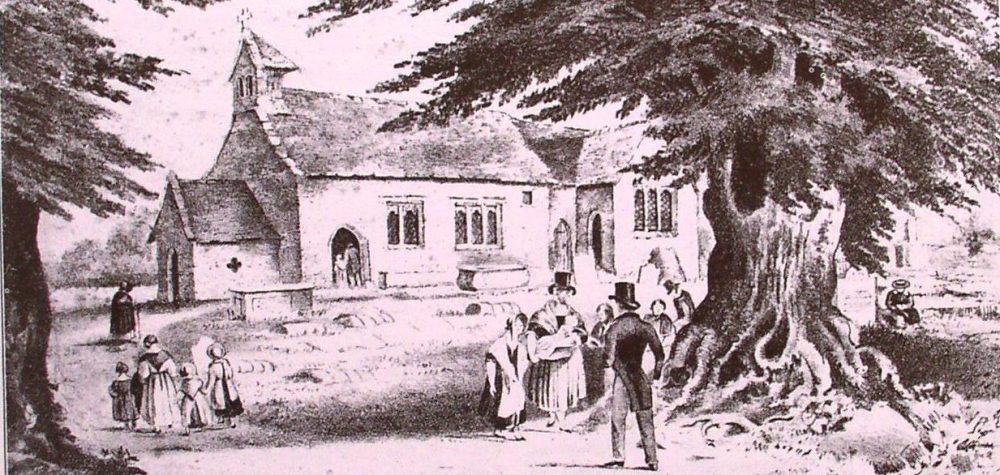
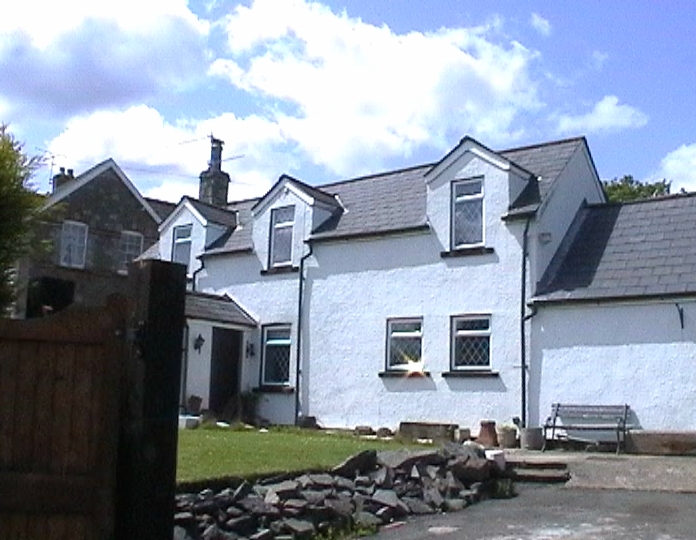 – 436 on the
– 436 on the 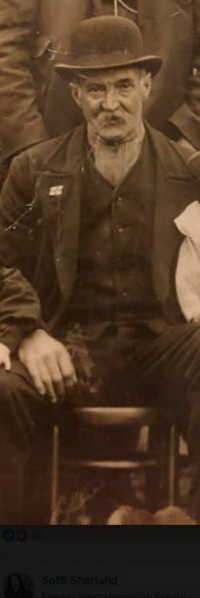

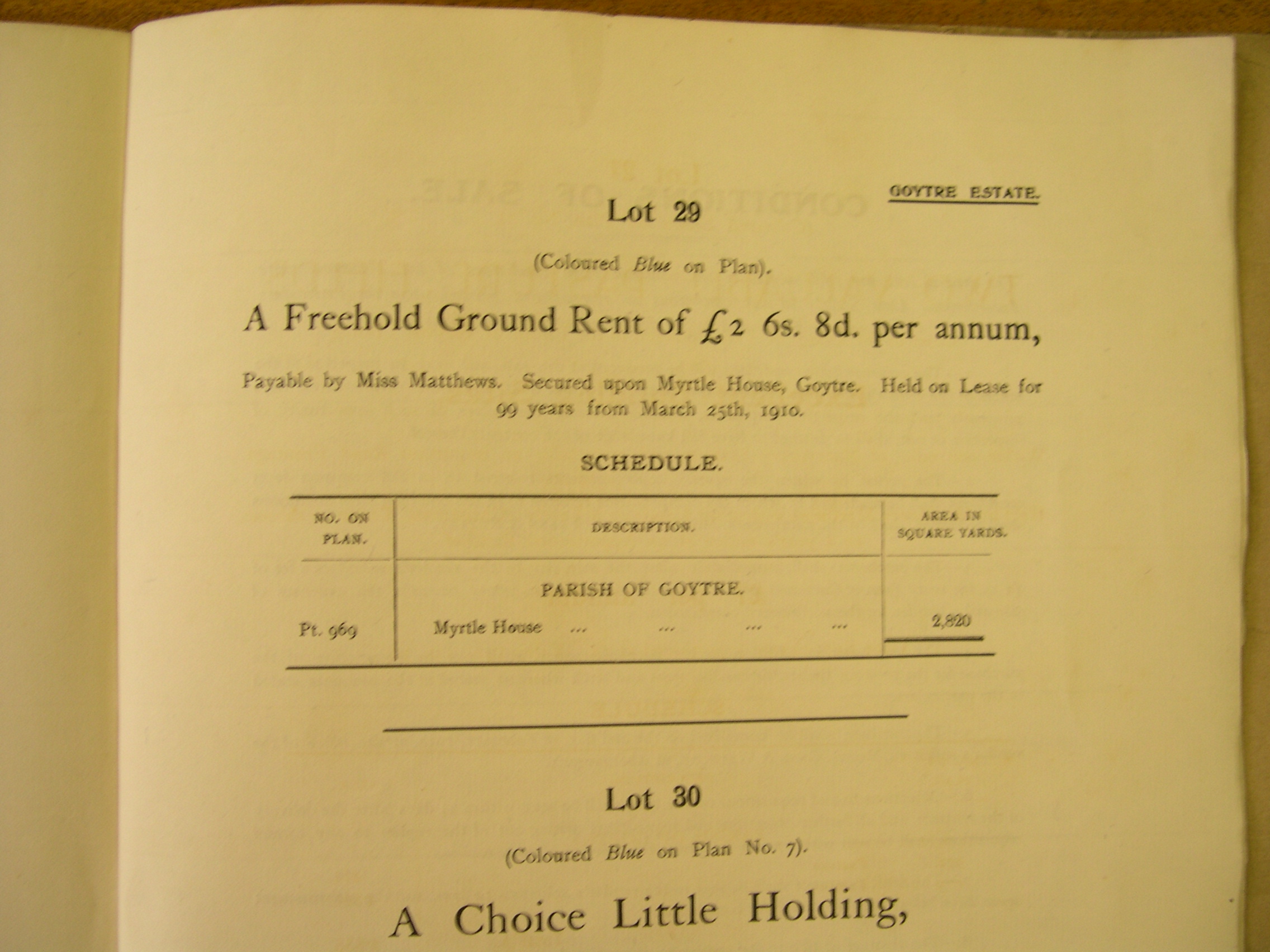 March 25th. The freehold ground rent is £2 6s 8d. The property on that record is called Myrtle House.
March 25th. The freehold ground rent is £2 6s 8d. The property on that record is called Myrtle House.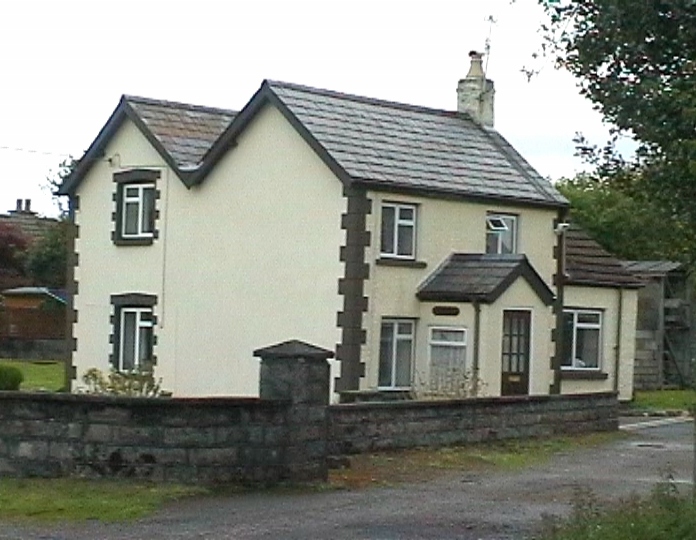
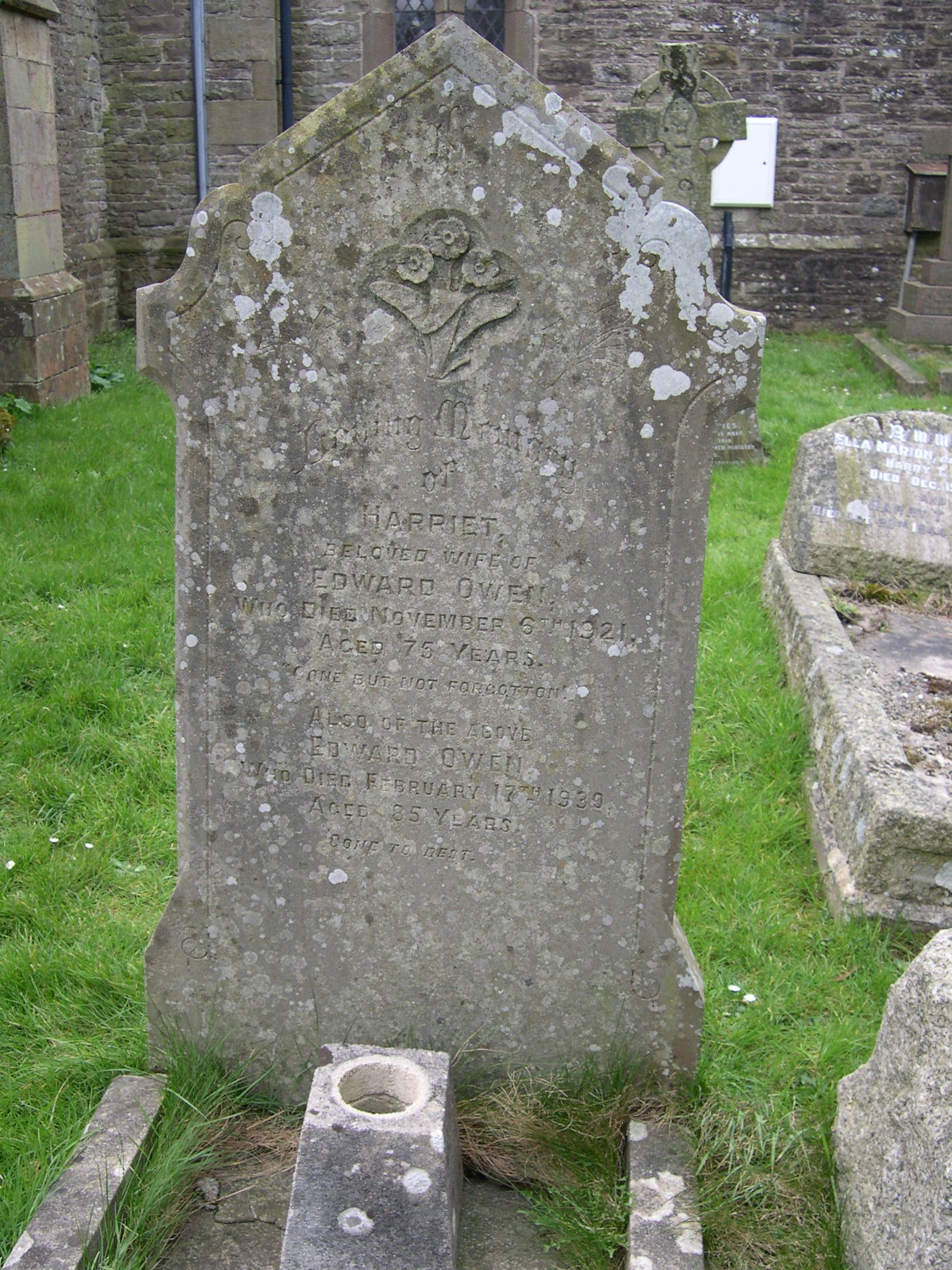
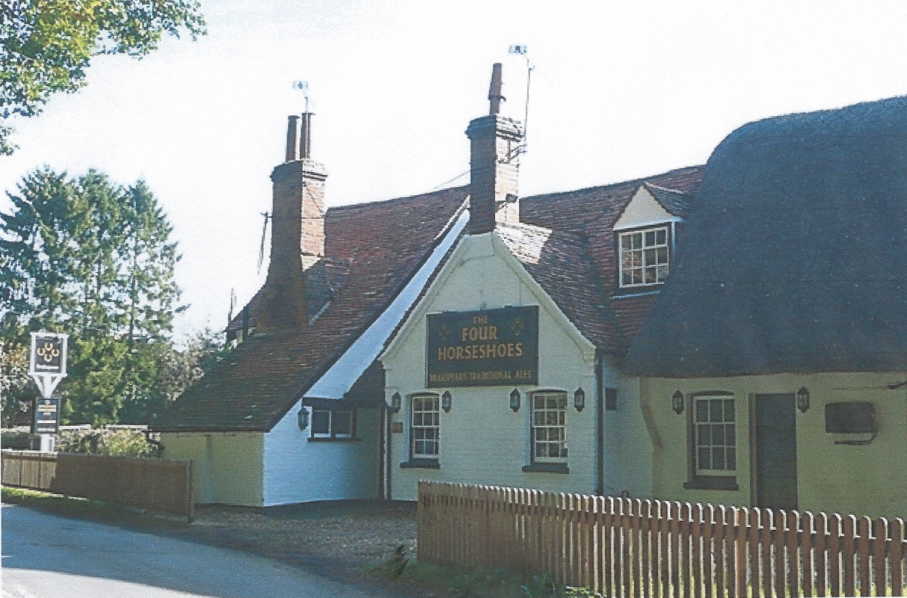 John Harding was born at the Four Horseshoes Inn, Checkendon, Oxfordshire in 1858, the son of Thomas and Martha Hope Harding.
John Harding was born at the Four Horseshoes Inn, Checkendon, Oxfordshire in 1858, the son of Thomas and Martha Hope Harding.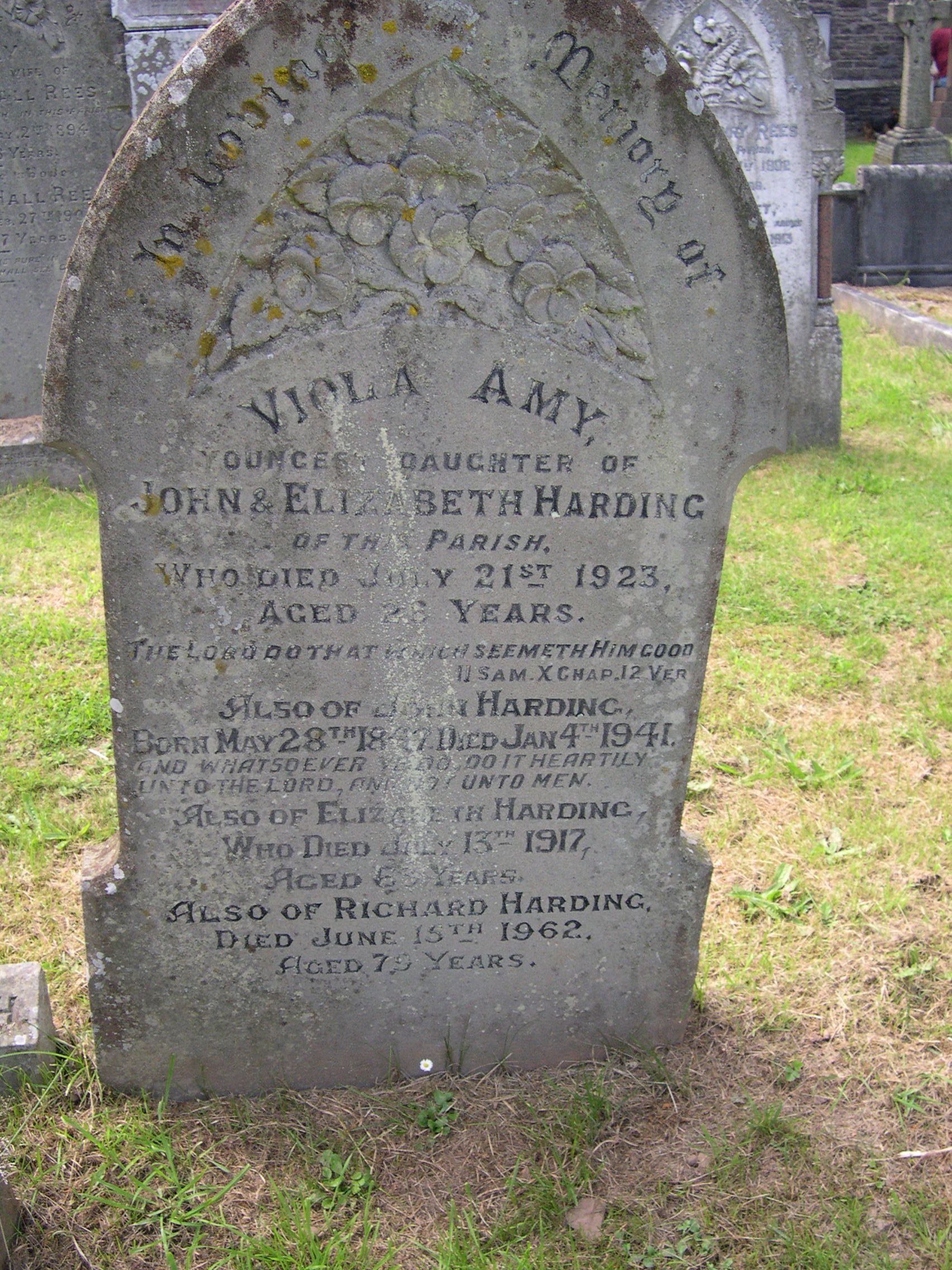
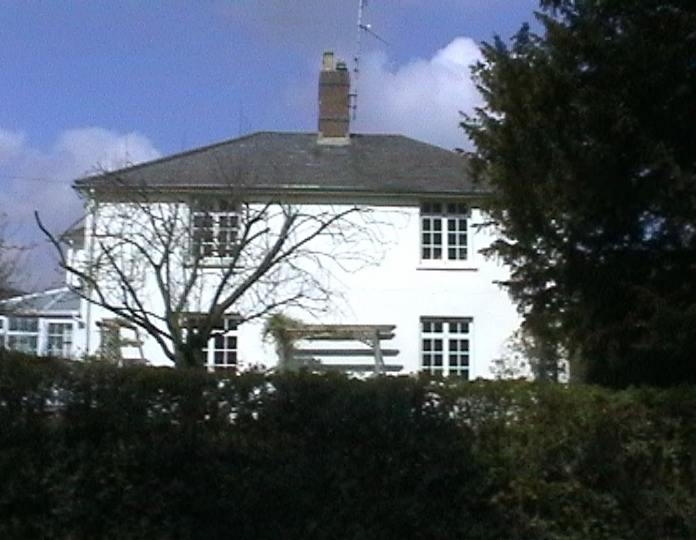
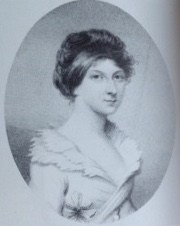 On the census of 1841 living at Ty Port is Catherine George and her 15 year old daughter Georgina, Temperance Deakin 20, Jepsey 2 months, Pheobe 6, Hannah Adler 30 and Elizabeth Phillips 85.
On the census of 1841 living at Ty Port is Catherine George and her 15 year old daughter Georgina, Temperance Deakin 20, Jepsey 2 months, Pheobe 6, Hannah Adler 30 and Elizabeth Phillips 85.
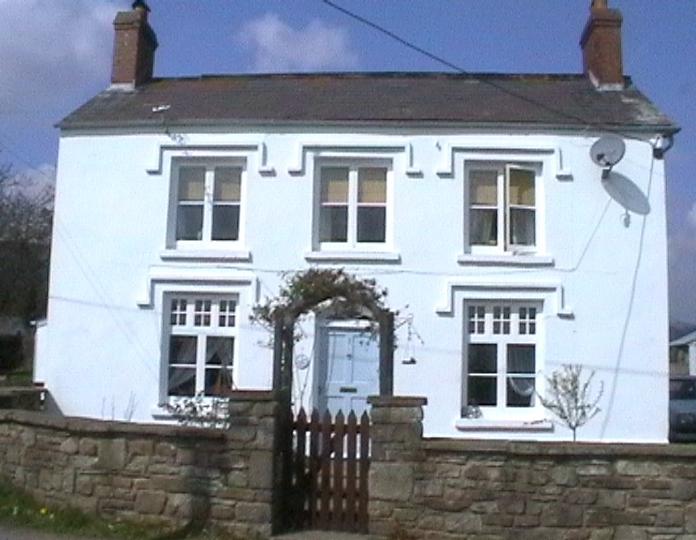 The Tavern, built in approximately 1852 by John Rosser of Pantglas farm and mill.
The Tavern, built in approximately 1852 by John Rosser of Pantglas farm and mill.